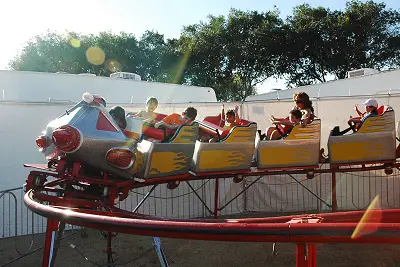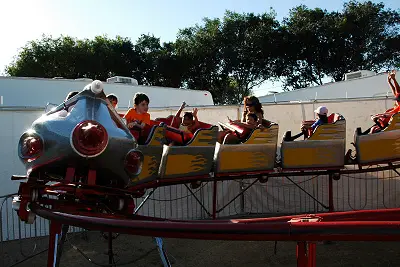A month ago I wrote about some myths and misconceptions about the differences between RAW and JPG formats. And at the end of that article I asked of RAW, “Is the quality really better?” Continue reading to find out what I learned. The answer may surprise you.
Category: Photography Tips & Tricks
Still life photography
Still life photography is the photography of inanimate objects purposefully arranged and lit. There’s something very satisfying about capturing something exactly as you pictured it in your mind. The items themselves, their arrangement, lighting, and camera settings are all meticulously controlled to produce the desired result. Still life photography is arguably the most technical of the photographic disciplines. Because the scene, the lighting, and the camera are all under your control, it is good training for becoming proficient both technically (camera control) and artistically (composition and lighting).
Quick tip: Flare control
When you’re shooting towards a bright light source, like the sun, light may hit the lens directly. When that happens, flare will inevitably appear in your photos. Flare introduces strange reflections and robs contrast from your images. Lens hoods control flare by shading the lens.

Flare from sunlight hitting the lens
But if you don’t have a hood or it isn’t working at the angle you need, use your hand. Raise your left hand to block the light source and shade your lens. You may have to hold your hand at arms length to get it out of the frame. On SLRs and DSLRs you can see the flare in the viewfinder so you’ll know when you’ve got it right. On point and shoots you can see the effect in the LCD.

Flare removed by shading the lens with my left hand. (This image is darker because I also changed the exposure between shots.)
A visit to the county fair
There’s something fascinating about a county fair. I’d never been much of a fan of the whole concept until after I’d gotten hooked on photography. And then, one Summer, I went to the fair and brought my camera along. Maybe it was because photography had taught me how to see again. How to see the wonder and grotesquerie that abounds at a county fair. There are more photo opportunities per square meter than almost anyplace I can think of.
Your light meter is stupid
I’ve written about metering before but I thought I’d recap an important point about the light meter in your camera: it’s a stupid, stupid device. Which isn’t to say that it’s useless. Far from it. Your camera’s light meter is an extremely useful tool. But, you have to know when you can trust it and when you can’t.
Vibration reduction/image stabilization video demonstration
Camera shake is the bane of photographers everywhere. No photographer has perfectly steady hands. Once shutter speeds drop, camera shake begins to seriously affect image sharpness. Fortunately, there are solutions. Nothing will give you consistently sharper photos than a sturdy tripod and every photographer should have one. But there’s a high-tech solution, too: image stabilization. Read on to learn a little about this interesting technology and view a through-the-lens video demonstration of it in action.
… Continue reading Vibration reduction/image stabilization video demonstration
RAW vs. JPG: Myths and misconceptions
Most digital cameras record JPG images because the JPG format provides a very high degree of fidelity for photographs in a very small amount of space. JPGs are high quality, small, can be viewed quickly and easily on any computer, and look great when printed. But JPGs, like all image formats, also have some limitations. RAW is another image format that addresses some of JPGs problems. But no format is perfect and RAW images have problems of their own.
How to shoot fireworks
Independence day is coming up in the USA (July 4th) and you’re bound to see a lot of articles start popping up about how to shoot fireworks. So many, in fact, that you might start to think it’s some kind of dark art (Ha! Dark, get it?). It’s pretty simple though, especially if you have a digital camera with a working LCD.
How do you name your digital photographs?
Each photograph I download from a memory card is automatically renamed with the date and time the image was shot. For example: 20060623_140123.jpg says that the photo was taken on June 23, 2006 at 2:01 PM (and 23 seconds). Each time photos are downloaded from a card, they’re put into a unique directory named after the current date. If I do more than one batch per day then a batch number is appended. For example: 2006_06_23 or 2006_06_23_01. For events or special occasions I’ll append a description to the folder name. The image download software that came with my Nikon does all of that for me but it wasn’t the default. Most image download software will allow you to do this and more.
It’s a nice naming system because each photo gets a unique identifier and it makes it easy to find the actual photo given the name or the date when you remember shooting it. Having a unique identifier for each photo is important if you’re selling prints since it allows your customers to tell you exactly which photo they want to buy without any misinterpretation (and if you’re licensing them for use you can put that ID in the license).
… Continue reading How do you name your digital photographs?
An introduction to macro and close-up photography
Macro photography is one of the most demanding disciplines of photography. The world of the small is a strange and unique place and makes some unusual demands on a photographer interested in capturing its beauty. Razor thin depth of field, extremely close working distances, and long exposure times combine to make macro photography a challenge. But it’s a challenge with a reward. Macros reveal a world that can’t be seen with the naked eye, alien landscapes, and strange creatures both beautiful and grotesque. I encourage you to try it. Many who do find a passion for macro photography they never knew existed.
… Continue reading An introduction to macro and close-up photography
to start
making profit!








